| Vintage Pulp | Jul 5 2024 |


Celebrities on paperback fronts are a (yet another) weakness of ours. We've been seduced into reading books by cover imagery from the likes of Kitty Swan, Elke Sommer, and Christina Lindberg, among others. Greenleaf Classics put Spanish star Soledad Miranda on the cover of Alan Marshall's 1974 novel Wild Young Flesh. The shot is a variation of an image of Miranda we shared years back. You may remember she died young in an automobile accident in 1970 at age twenty-seven, but left behind a few interesting movies, such as El diablo que vinó de Akasawa and 100 Rifles. And now, this cover.
Alan Marshall was a pseudonym, and while it was sometimes used by known authors such as Donald Westlake, in this case the actual writer remains unknown. The story deals with the carnal goings-on among a group of high schoolers. In addition to it being a creepy experience reading its explicit underaged sex, about a quarter of the story takes place in a utility closet. If you know anything about sleaze novels and the talent level involved, the fact that the author couldn't be bothered to set scenes outside of a single small room tells you that the narrative is extremely minimal. But we couldn't resist Soledad. We'll just try to put this one behind us, though, and we recommend that you don't put it in front of you.
| Femmes Fatales | May 13 2018 |

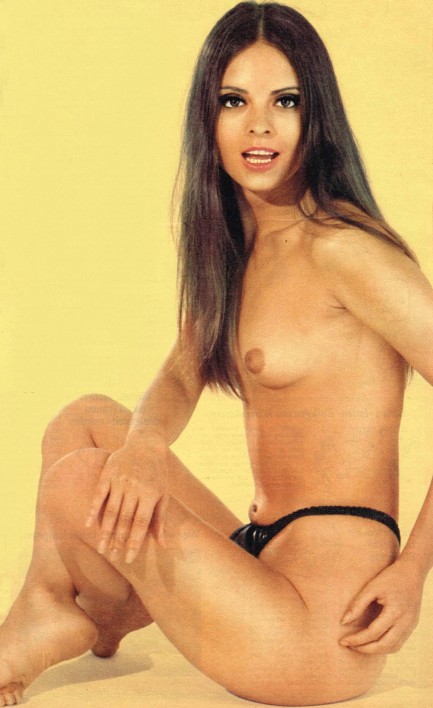
| Vintage Pulp | Jun 3 2011 |

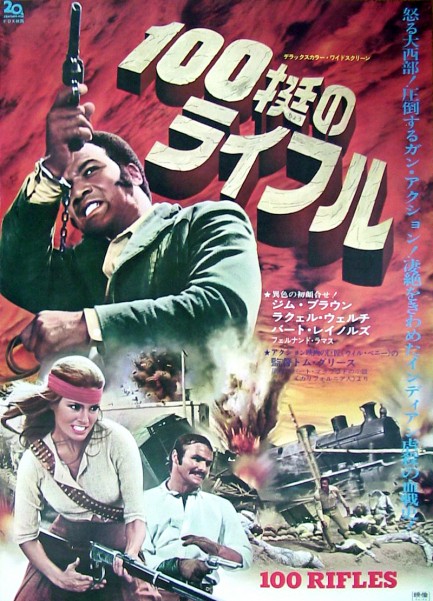
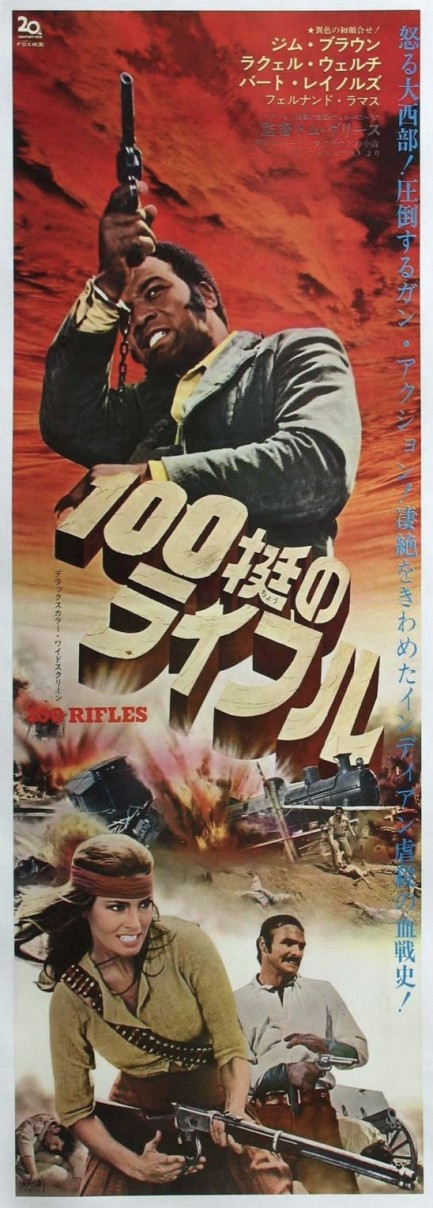
When we saw these Japanese posters for the 1969 western 100 Rifles, we made a special point to watch the film just so we had a good reason to share the art. So there you go. Now as for the actual film, there’s a moment about halfway through where mega sex symbol Raquel Welch says to black ex-NFL football star Jim Brown, “Do you want me?” That’s about as rhetorical a question as has ever been asked on a motion picture screen. Of course he wants her—who wouldn’t? But this being an American movie, the real question is, “What will the consequences be?” Because after all, even though interracial romance works just fine for millions of real life couples, in Hollywood that simply can’t be. Especially when you’re talking about heterosexual black males.
So we know someone’s going to end up dead. We could have prefaced that last statement with a spoiler alert, but we all know it wasn’t really a spoiler. As moviegoers, we’ve been trained to know happily-ever-after isn’t a component of these black/white love affairs. When 100 Rifles was made in 1969, it may have seemed America was on the way—if perhaps a bit turbulently—to a post-racial future. But forty-two years later 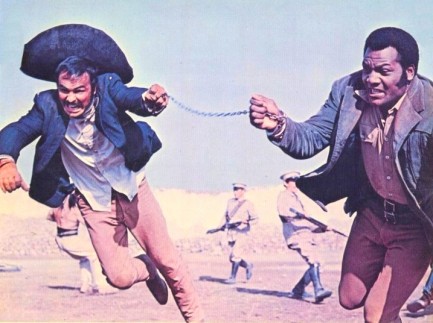 we bet you can’t think of three other instances where a top tier white starlet had a love scene with a black man. So even though 100 Rifles offers up a reasonably compelling tale of guerrilla warfare on the Mexican frontier, and Burt Reynolds co-stars in a role perfectly crafted for his special brand of smarmy brilliance, and you even get an unforgettable nude minute of cult siren Soledad Miranda, you mainly come away with yet another reminder of how edgy Hollywood was capable of being back then, and how risk averse it is today.
we bet you can’t think of three other instances where a top tier white starlet had a love scene with a black man. So even though 100 Rifles offers up a reasonably compelling tale of guerrilla warfare on the Mexican frontier, and Burt Reynolds co-stars in a role perfectly crafted for his special brand of smarmy brilliance, and you even get an unforgettable nude minute of cult siren Soledad Miranda, you mainly come away with yet another reminder of how edgy Hollywood was capable of being back then, and how risk averse it is today.
We don’t speak of risk merely in terms of race, but in general. Despite modern cinema being awash in CGI and 3D and THX sound and obscene budgets, as well as dozens of swaggering young stars, along with teams of clever writers and yachtfuls of execs who all claim to be mavericks, the movies are overwhelmingly soulless. 100 Rifles is not a great film, but even as a late-1800s period piece it asks relevant 1969-style questions about racial mixing, social struggle, and offers serious introspection about the worth of warfare. It's an interesting product of the time from which it sprang. That's worth a lot, in our book. By comparison, if we consider post-millennial movies a product of the time in which we now live, then the message seems to be: just don’t make us think.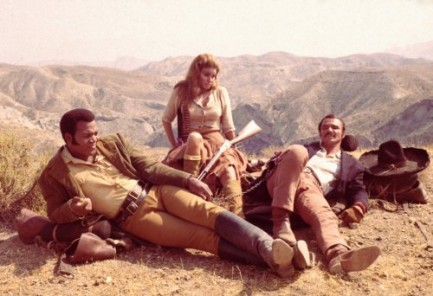
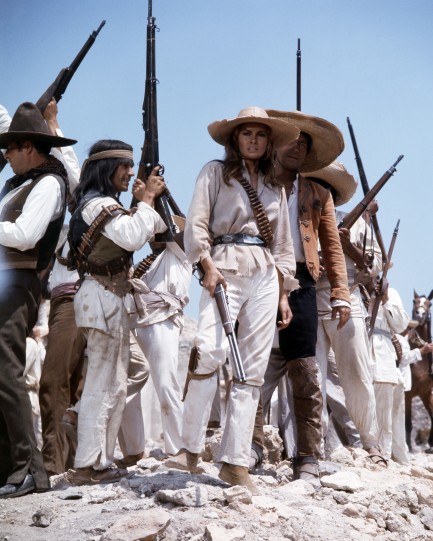
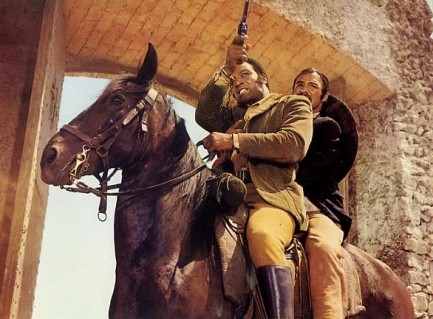
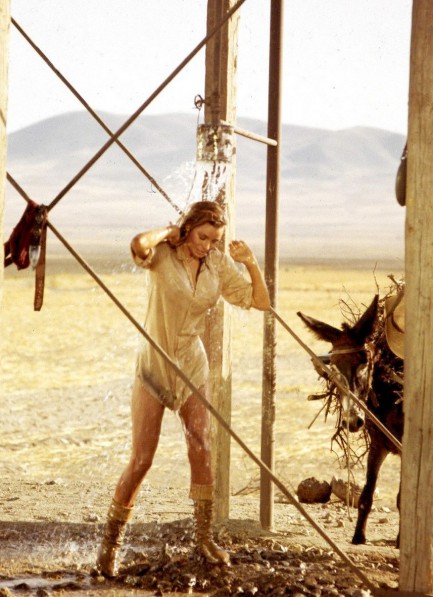
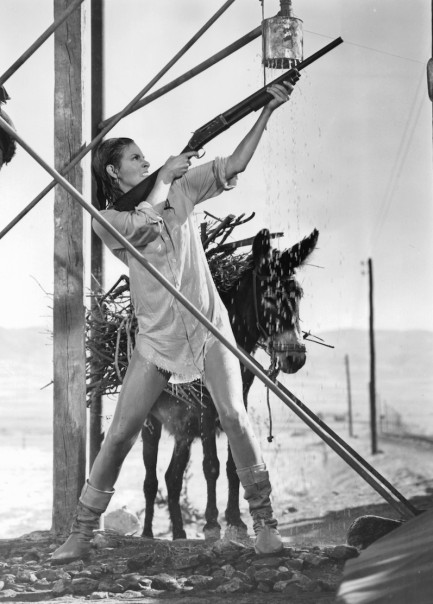
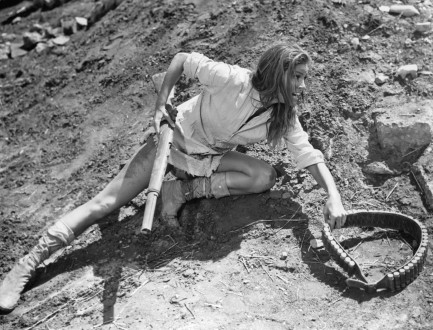
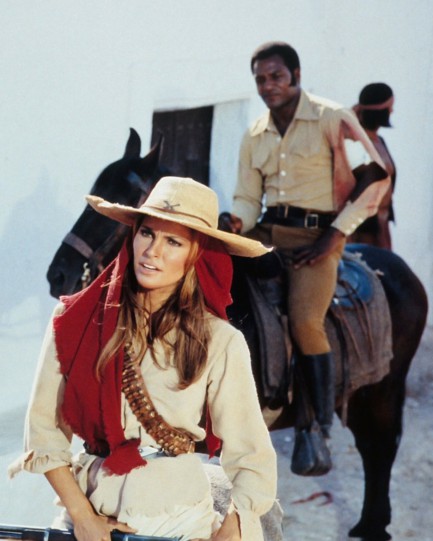
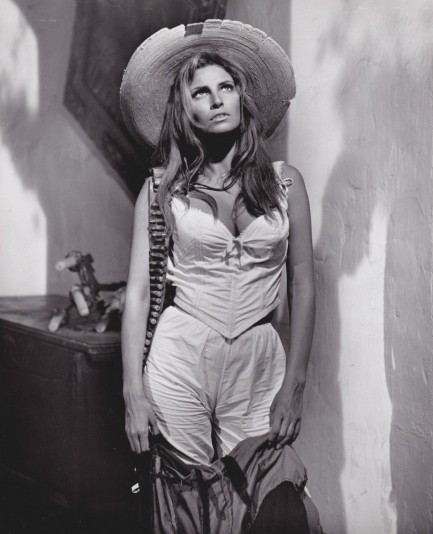
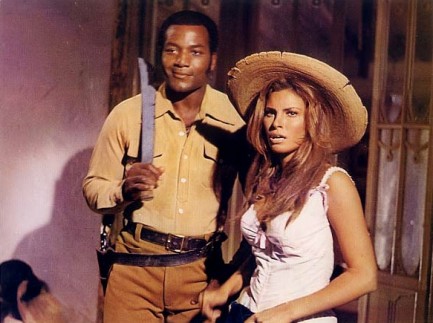
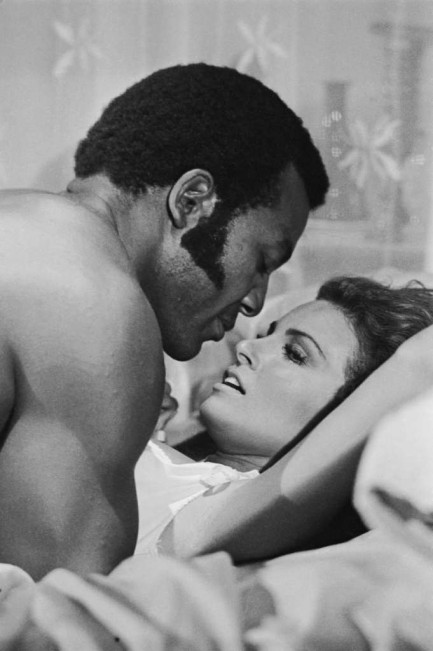
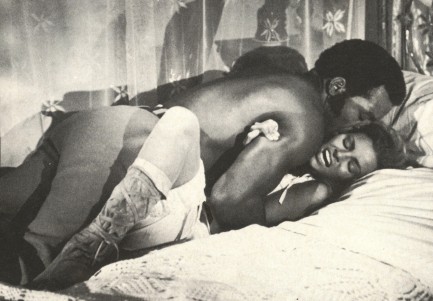
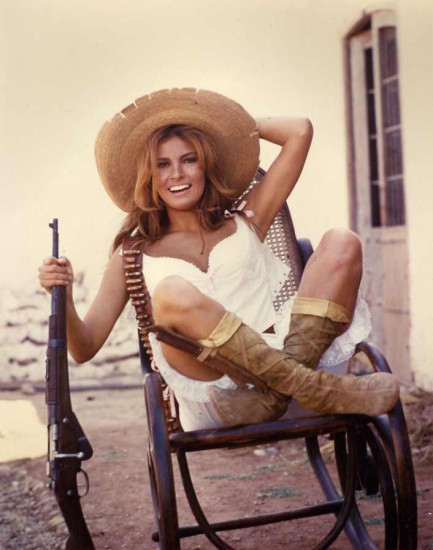
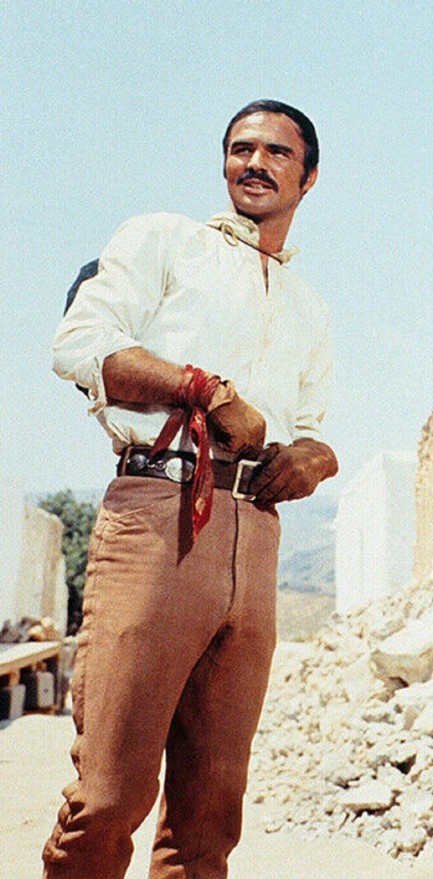
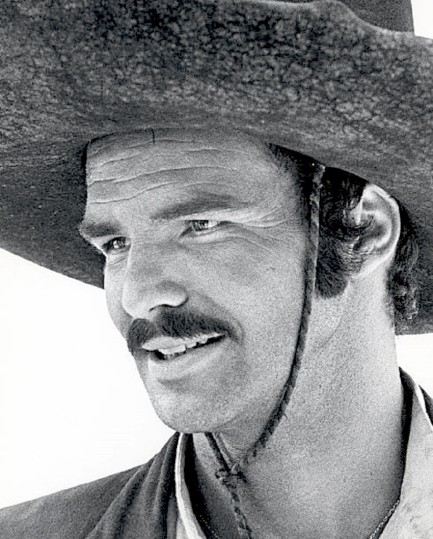
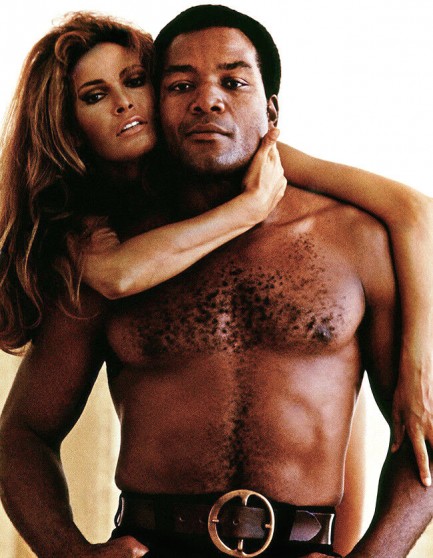
| Vintage Pulp | Nov 12 2009 |

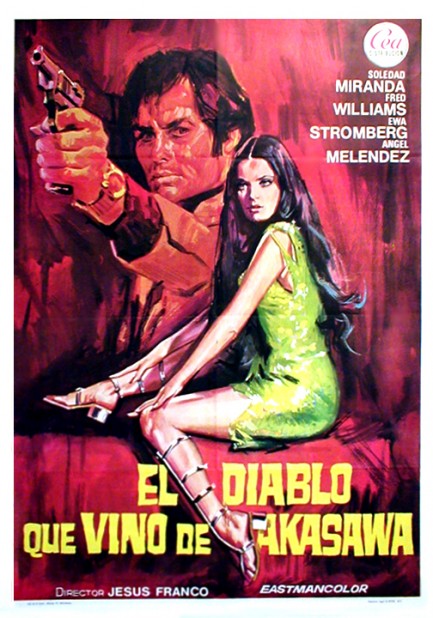
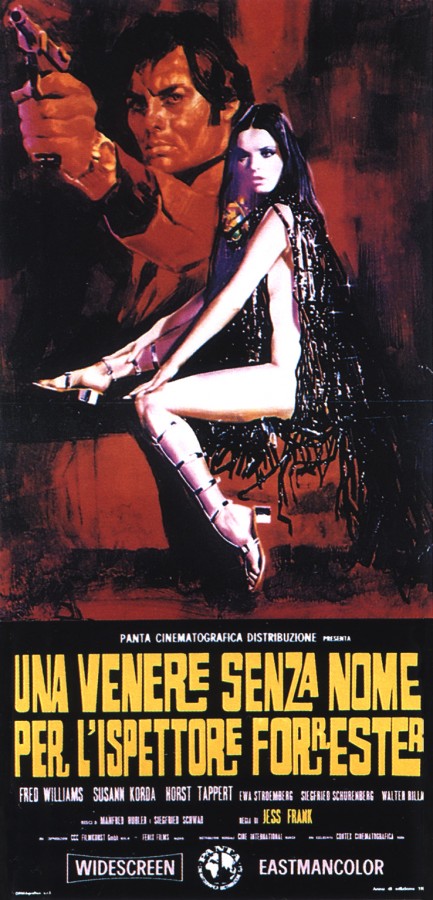
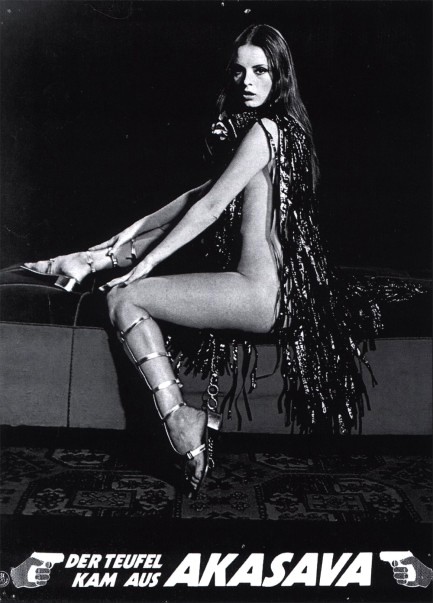
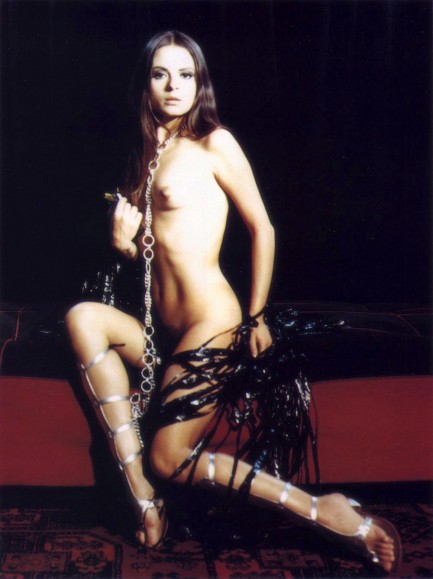
El diablo que vinó de Akasawa, for which you see the great poster above, is a Jesús Franco flick, so you know to expect sex, action, and dubious technical values. The film is about a detective investigating the disappearance of a professor in the fictive African land of Akasava. The sleuth discovers that the mystery revolves around a mineral that can turn metal into gold and men into zombies. Of course, everyone wants control of the substance and pretty soon spies are crawling out of the woodwork and wah-wah guitar is swelling on the soundtrack. All very fun.
We're also appreciative of the art, which is based on a promo shot of star Soledad Miranda, aka Susann Korda. The progression from photo to photo-illustration to painting is similar to the one we showed you for Death Is a Woman, but with more skin. And uh, more muff. Hope we brightened your day.
Now for the not-so-wonderful part—Soledad Miranda died in a car crash in Portugal in 1970, aged 27. Her fame was achieved mainly after her death, as B-movie fans rediscovered her extensive shlock catalog thanks to VHS. You can get a full idea what sort of cheesefest El diablo que vinó de Akasawa is by viewing an original trailer here. It opened in Spain today, after she was gone, in 1971.




































































